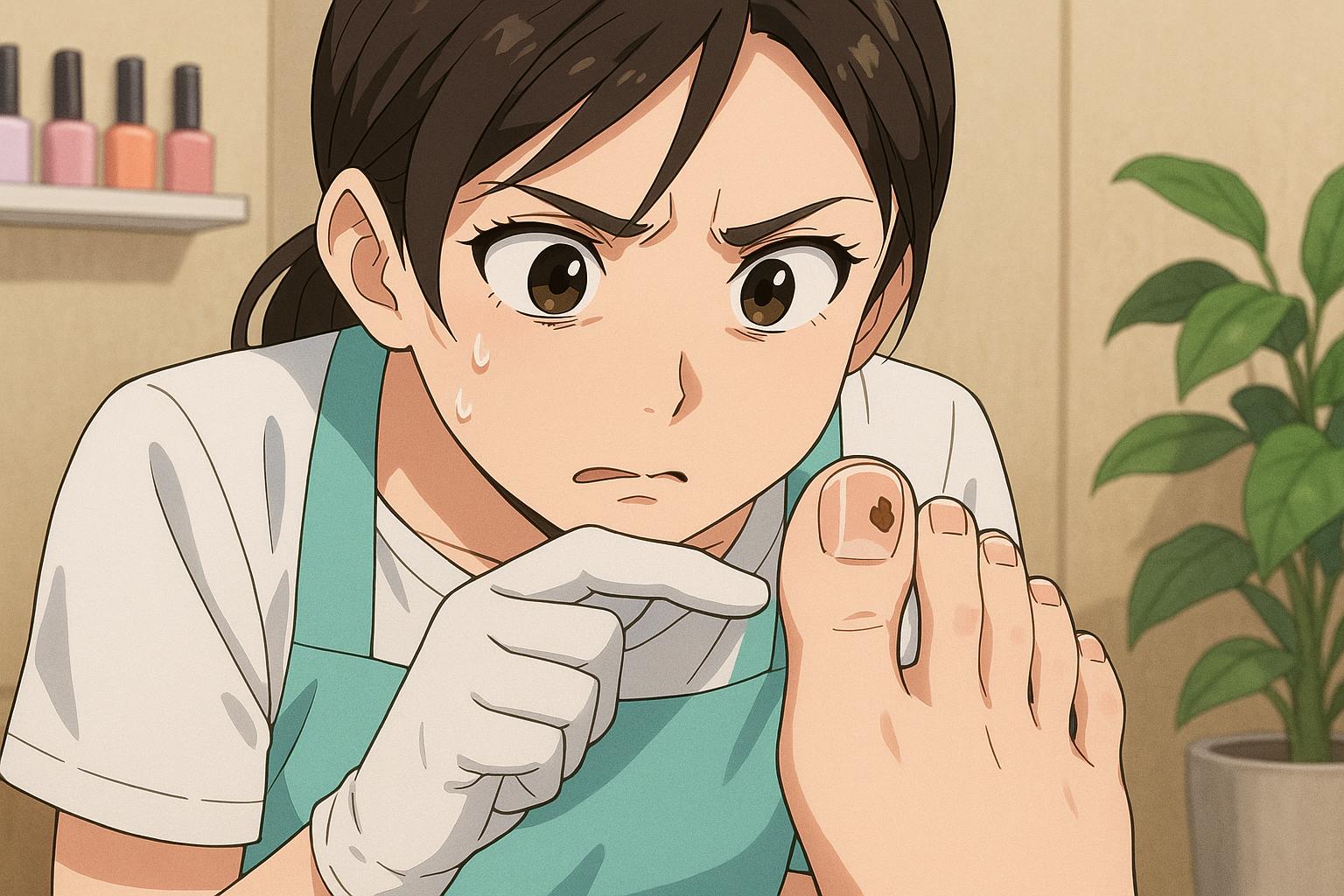Beauticians and hair professionals often occupy a unique position in our lives, not just offering aesthetic services but also holding the potential to save lives. This was vividly illustrated in the case of Louise Whymark, a 35-year-old customer service assistant from Harwich, Essex. Recently, Louise's story emerged of how a seemingly innocuous brown mark on her big toe led to life-saving medical intervention, all thanks to the vigilance of her nail technician.
In January 2022, Louise noticed a strange brown mark on her toenail. "It didn't look right," she recalled, yet she hesitated to consult a doctor, dismissing it as minor. Instead, an instinct urged her to send a photograph of the mark to her trusted nail technician, with whom she had built a long-standing rapport over the years. The technician recognised the potential seriousness of the situation, advising Louise to seek medical attention due to the possibility that such marks could signify deeper underlying issues.
This pivotal moment led Louise to her GP, whose subsequent tests revealed alarming results: her kidneys were operating at only 25% capacity. Professor Simon Davies, a consultant nephrologist at the University Hospital of North Midlands, emphasised the often "silent" nature of chronic kidney disease, explaining that it frequently lacks obvious symptoms. As a consequence, signs such as unusual nail changes can be significant indicators of more serious health problems. "When kidney disease occurs, the body struggles to eliminate waste products effectively," he noted, stressing the importance of immediate medical evaluation in the presence of unexplained changes like those seen in nails.
Following her diagnosis, Louise was found to have IGA nephropathy, a condition resulting in kidney inflammation. The severity of her situation was underscored by an extremely high blood pressure reading of 213/100, which placed her at risk of stroke. Thankfully, she is now receiving dialysis three times a week while waiting for a transplant. Reflecting on her experience, she stated, "If it hadn't been spotted when it was, I’d be in a far worse state. I’m so thankful to my nail technician. I believe she saved my life."
Louise’s experience underscores the broader implications of the training programmes offered to beauty professionals, particularly those provided by charities such as Skcin. This organisation has taken significant strides in equipping beauticians and hairdressers with the knowledge needed to spot early signs of skin cancer and other serious health conditions. With skin cancer being the most commonly diagnosed cancer in the UK, affecting thousands each year, this training represents a crucial line of defence. Courses under the Melanoma and Skin Cancer Early Detection (MASCED) initiative are designed for beauty professionals who regularly observe their clients closely, giving them a unique opportunity to identify abnormalities that might otherwise go unchecked.
Awareness and education are lauded as vital tools in combating the alarming statistics surrounding skin cancer. According to Cancer Research UK, melanoma alone claims over 2,400 lives annually in the UK, despite 86% of cases being preventable with early intervention. Schemes targeting beauticians are particularly significant as they connect with demographics who may not frequently access healthcare, particularly younger women who might only visit salons rather than doctors.
Moreover, the challenge of recognising melanoma is particularly acute among people with darker skin types, as conditions such as acral melanoma can present differently and may often be overlooked. Campaigns like the Beauty Spotters initiative specifically address these disparities, highlighting the need for culturally sensitive approaches in skin health education.
The integration of health awareness into the beauty industry epitomises a proactive model of care, ultimately offering clients a dual benefit: aesthetics and health. By prioritising education and training for beauty professionals, we not only empower them to take action but also create a ripple effect of awareness among the public. As Louise's case vividly demonstrates, the stakes can be extraordinarily high, with the potential for beauticians to be the catalysts for diagnosis and treatment of life-threatening conditions.
As we continue to unravel the intersecting realms of beauty and health, it becomes increasingly clear that vigilance, informed by robust training, can and does save lives.
Reference Map
- Paragraph 1, 2, 3, 4, 6, 7
- Paragraph 5
- Paragraph 5
- Paragraph 6
- Paragraph 6
- Paragraph 6
- Paragraph 6
Source: Noah Wire Services
